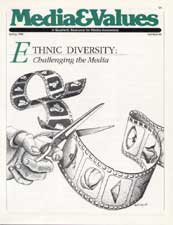Century of Abuse: Ethnic Images on the Big Screen
|
This article originally appeared in Issue# 43
|
From the dawn of films, virtually all ethnic groups have been stereotyped on screen.
When one considers the history of the depiction of ethnic and racial groups within motion pictures, one sees almost a century of abuse in this regard. From the dawn of films virtually all ethnic groups have been stereotyped on the screen. Yet it is impossible to blame motion pictures alone for the perpetuation of these derogatory images. Most existed previously in literature and the graphic arts. Nevertheless, as the first mass media in the United States, movies spread distorted and often negative images of blacks, Mexican Americans. Irish, Chinese, Italians and others throughout the world.
Examples abound from the earliest days of the silent cinema. D. W. Griffith's The Birth of a Nation is perhaps the most notorious example. The famed director's portrayal of violent, lazy and ignorant blacks in the Civil War south has resulted in decades of protest whenever the film has been shown.
But Griffith's work was only one of many to display black characters in the worst possible light. Hispanics, known as "greasers" in such silent films as Tony the Greaser (1911), experienced similar treatment in early silents.
The image of America's ethnic and racial groups has not been uniformly negative, to be sure. There have been periods in which movies have taken long strides in the elimination of derogatory ethnic portrayals. During World War II, major advances were seen in the depiction of Hispanics and blacks, as a response to a deliberate wartime effort to demonstrate our democracy in action on the screen. In such motion pictures as That Night in Rio, Down Argentine Way, and Weekend in Havana, Latin Americans became sophisticated and educated individuals. Several musicals with black casts, such as Stormy Weather and Cabin in the Sky, appeared in an attempt to display the prominent role of black citizens in American society. Interestingly, both of these reversals were motivated by a major government effort to eliminate many of the derogatory stereotypes that had been so prevalent on the screen in earlier periods.
Progress, where it exists, is rarely continuous. If there's a lesson in this continuing pattern, it may be that film stereotypes are convenient shorthand for ideas moviemakers expect viewers to hold. Perhaps only if we change our ideas and broaden our concepts can we prevent the repetition of this century of stereotype.



